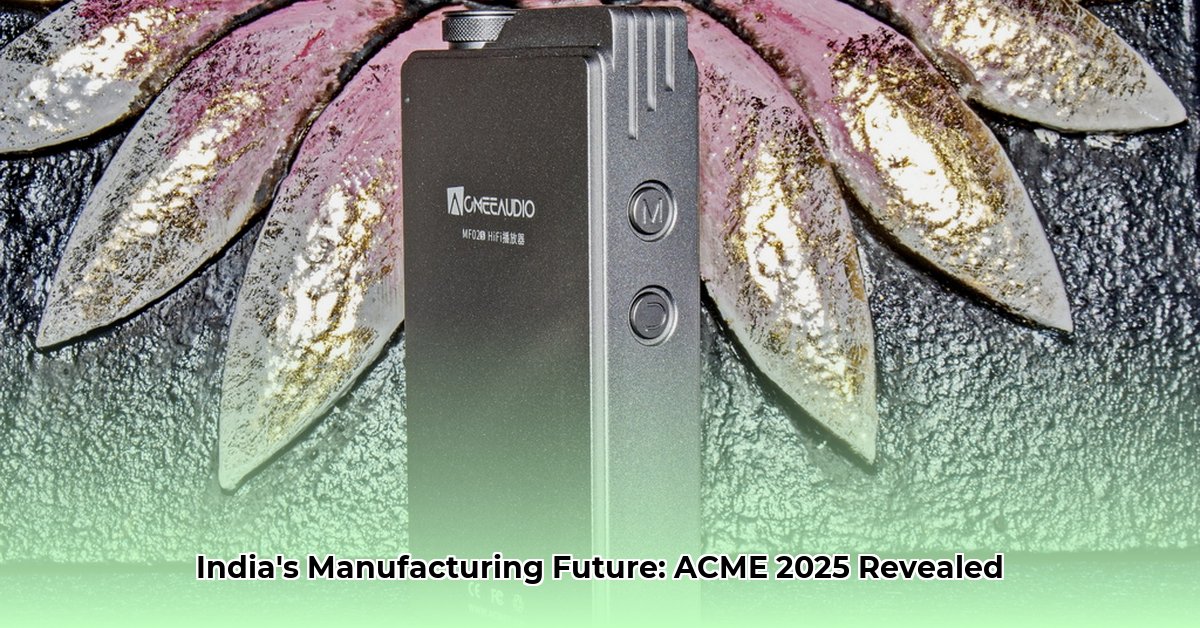
India's Manufacturing Boom: A Technological Transformation
India's manufacturing sector is experiencing explosive growth, fueled by the government's "Make in India" initiative. ACME 2025, a major trade show, serves as a powerful testament to this burgeoning industry, showcasing advancements in automation and energy-efficient technologies. This technological leap is critical for India's ambition to become a global manufacturing powerhouse, challenging established leaders. But can India truly compete on the world stage? This depends significantly on the success of its technological integration and infrastructure development. How will this impact global supply chains and manufacturing dynamics?
The Promise and Peril of Technological Advancement
The focus on automation and energy-efficient technologies at ACME 2025 signifies a crucial step for India. However, successful implementation requires addressing significant challenges. A recent report from the Confederation of Indian Industry (CII) highlights the need for substantial investment in upgrading factory infrastructure and training a skilled workforce. "The gap between technological advancements and workforce readiness poses a significant challenge," notes Dr. Priya Sharma, Lead Economist at the CII. This underscores the importance of a holistic approach to technological transformation. Is India prepared to absorb this technological shift, ensuring its workforce is equipped to handle the evolution of manufacturing processes?
Navigating the Challenges: Infrastructure and Workforce Development
Despite the tremendous potential, several obstacles hinder India's manufacturing growth. Significant improvements in infrastructure—reliable electricity supply, efficient transportation networks, and robust digital connectivity—are crucial. The shortage of skilled labor presents another significant hurdle. Addressing these infrastructure limitations and workforce development needs is paramount to realizing India's manufacturing ambitions. These issues, if left unaddressed, risk derailing the rapid growth projected by industry analysts. What strategic investments are needed to overcome these bottlenecks and accelerate growth?
Foreign Investment: A Catalyst for Growth
Foreign investment is essential for accelerating India's manufacturing sector development. However, attracting this investment requires a conducive regulatory environment. Clear, consistent laws that protect intellectual property are crucial. This will ensure investor confidence and encourage technology transfer, creating a virtuous cycle of growth. But how can India balance the need to attract foreign capital with the need to build domestic capabilities to prevent over reliance on external investment?
Key Players and Their Strategies: A Collaborative Approach
Success hinges on the coordinated efforts of various stakeholders.
| Stakeholder | Short-Term Goals | Long-Term Vision |
|---|---|---|
| Indian Manufacturers | Automation adoption, participation in ACME 2025, worker training. | Global expansion, strategic partnerships, robust R&D. |
| Foreign Investors | Due diligence, infrastructure assessment, local partnerships. | Establishing manufacturing facilities, investing in local talent, sustainable practices adoption. |
| Indian Government | Regulatory streamlining, infrastructure improvements, skills development programs. | Promoting "Make in India," attracting high-value investments, fostering innovation. |
| Global Technology Companies | Providing tailored solutions, training, and support. | Building long-term partnerships, investing in Indian R&D. |
Risk Mitigation: A Proactive Approach
Several factors could impede India's progress.
| Risk Factor | Likelihood | Potential Problems | Mitigation Strategies |
|---|---|---|---|
| Energy Efficiency Transition | Moderate | High energy costs, technology adoption challenges, skill gaps. | Government incentives, subsidies, comprehensive training programs. |
| Factory Automation | Moderate | High upfront investment, integration issues, potential job displacement. | Phased implementation, retraining programs, focus on creating new automation jobs. |
| "Make in India" Initiative Success | Moderate | Infrastructure gaps, regulatory hurdles, global competition. | Targeted infrastructure development, regulatory reforms, sector-specific focus. |
Regulatory Landscape: Fostering a Conducive Environment
A transparent and efficient regulatory framework is paramount. Streamlined processes, robust intellectual property protection, and clear environmental guidelines are vital. The perception of risk and reward by foreign investors is directly influenced by this environment. A supportive regulatory climate forms the cornerstone of sustainable manufacturing growth. How can India fine-tune its regulatory framework to maximize investor confidence and minimize bureaucracy?
ACME 2025 and the Future: A Dynamic Story
ACME 2025 provides a glimpse into India's manufacturing potential. While challenges persist, the nation's commitment to becoming a global manufacturing leader is undeniable. Success depends on collaboration, strategic investments, and a supportive regulatory environment. The trajectory of India's manufacturing future, as observed through ACME 2025, is an unfolding narrative filled with both promise and challenges. What opportunities does this dynamic landscape offer for businesses and investors?